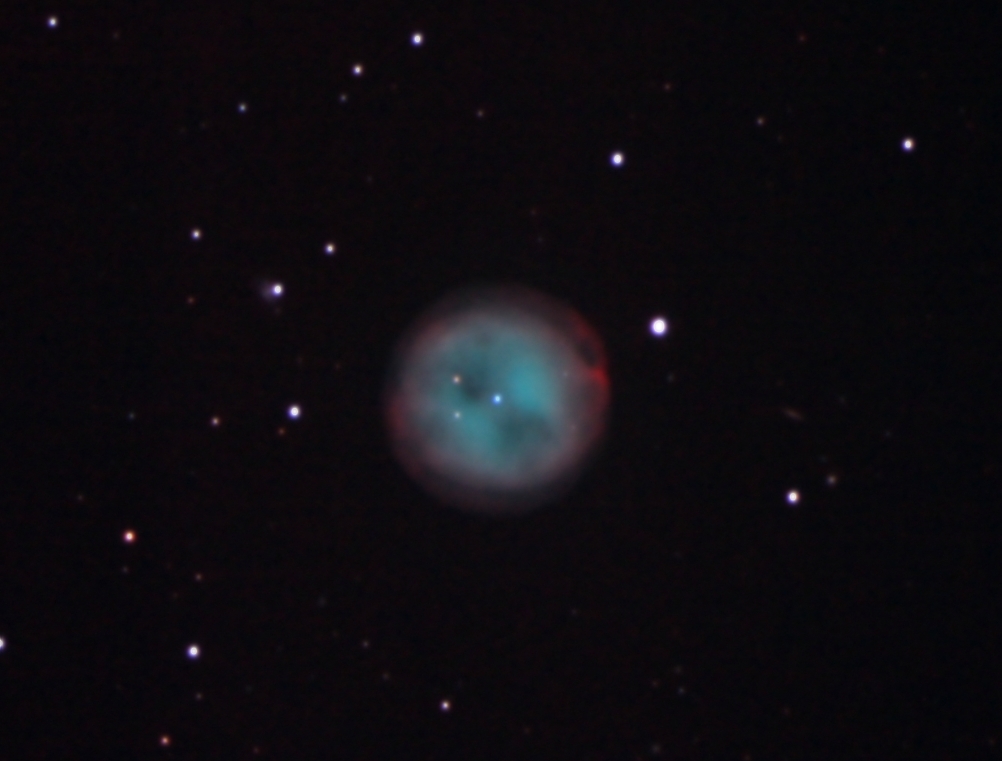
|
|
| M97, the Owl Nebula |
|
A fairly faint nebula, vaguely reminiscent of the face of an owl. Some report that William Parsons the 3rd Earl of Rosse described it as such when he observed it in 1848 with his 3' diameter speculum reflector scope. However, I found no such reference to its "owl" nature or name until the early 20th century by photographers from the Lick observatory. The bluish central star is a 16th magnitude (twice as faint as Pluto) white hot dwarf star, which is not actually a star, but the remains of a one time star that threw off its outer layers about 6000 years ago. The outer layers now make up the nebula, which is fluorescing from and lit by the radiation coming from the white hot 110,000 deg core. The green color is from glowing ionized oxygen, and the red from ionized hydrogen. The two "eyes" indicate where the poles of the original star were, as less material tends to blow off from around the poles. M97 is best seen from late winter to early summer. You'll need at least a 4" scope to see very much of it, with a 12" scope or larger giving a nicer view. A nebula filter helps it stand out against the background. It's just below the bowl of the big dipper. The galaxy M108 is just a short distance away, and much more easily spotted. |
|
10"
F6.3 Schmidt Cassegrain telescope, Baader coma corrector, IDAS P2 light
pollution filter. Astro modified Canon 40D DSLR at prime focus |